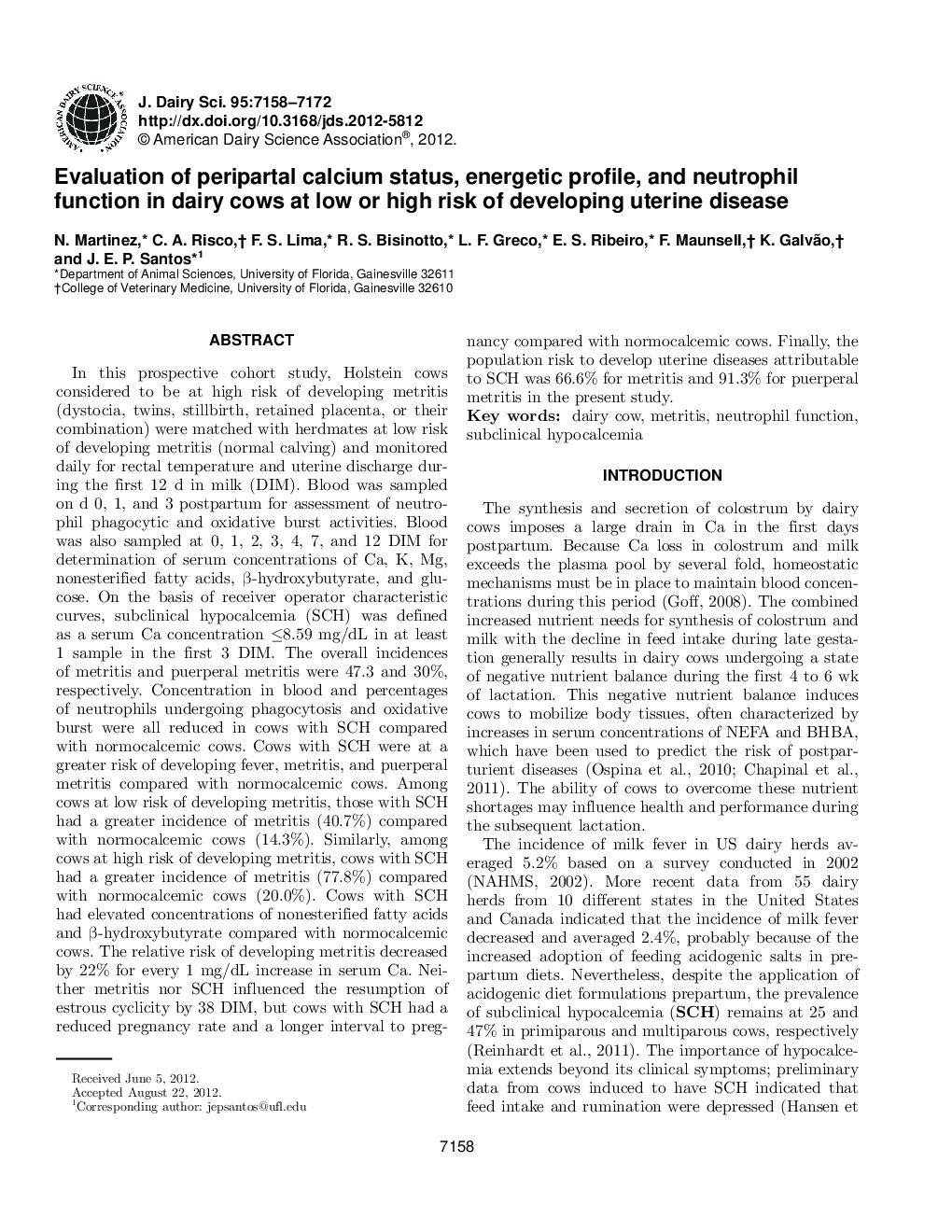| Article ID | Journal | Published Year | Pages | File Type |
|---|---|---|---|---|
| 10978674 | Journal of Dairy Science | 2012 | 15 Pages |
Abstract
In this prospective cohort study, Holstein cows considered to be at high risk of developing metritis (dystocia, twins, stillbirth, retained placenta, or their combination) were matched with herdmates at low risk of developing metritis (normal calving) and monitored daily for rectal temperature and uterine discharge during the first 12 d in milk (DIM). Blood was sampled on d 0, 1, and 3 postpartum for assessment of neutrophil phagocytic and oxidative burst activities. Blood was also sampled at 0, 1, 2, 3, 4, 7, and 12 DIM for determination of serum concentrations of Ca, K, Mg, nonesterified fatty acids, β-hydroxybutyrate, and glucose. On the basis of receiver operator characteristic curves, subclinical hypocalcemia (SCH) was defined as a serum Ca concentration â¤8.59 mg/dL in at least 1 sample in the first 3 DIM. The overall incidences of metritis and puerperal metritis were 47.3 and 30%, respectively. Concentration in blood and percentages of neutrophils undergoing phagocytosis and oxidative burst were all reduced in cows with SCH compared with normocalcemic cows. Cows with SCH were at a greater risk of developing fever, metritis, and puerperal metritis compared with normocalcemic cows. Among cows at low risk of developing metritis, those with SCH had a greater incidence of metritis (40.7%) compared with normocalcemic cows (14.3%). Similarly, among cows at high risk of developing metritis, cows with SCH had a greater incidence of metritis (77.8%) compared with normocalcemic cows (20.0%). Cows with SCH had elevated concentrations of nonesterified fatty acids and β-hydroxybutyrate compared with normocalcemic cows. The relative risk of developing metritis decreased by 22% for every 1 mg/dL increase in serum Ca. Neither metritis nor SCH influenced the resumption of estrous cyclicity by 38 DIM, but cows with SCH had a reduced pregnancy rate and a longer interval to pregnancy compared with normocalcemic cows. Finally, the population risk to develop uterine diseases attributable to SCH was 66.6% for metritis and 91.3% for puerperal metritis in the present study.
Related Topics
Life Sciences
Agricultural and Biological Sciences
Animal Science and Zoology
Authors
N. Martinez, C.A. Risco, F.S. Lima, R.S. Bisinotto, L.F. Greco, E.S. Ribeiro, F. Maunsell, K. Galvão, J.E.P. Santos,
